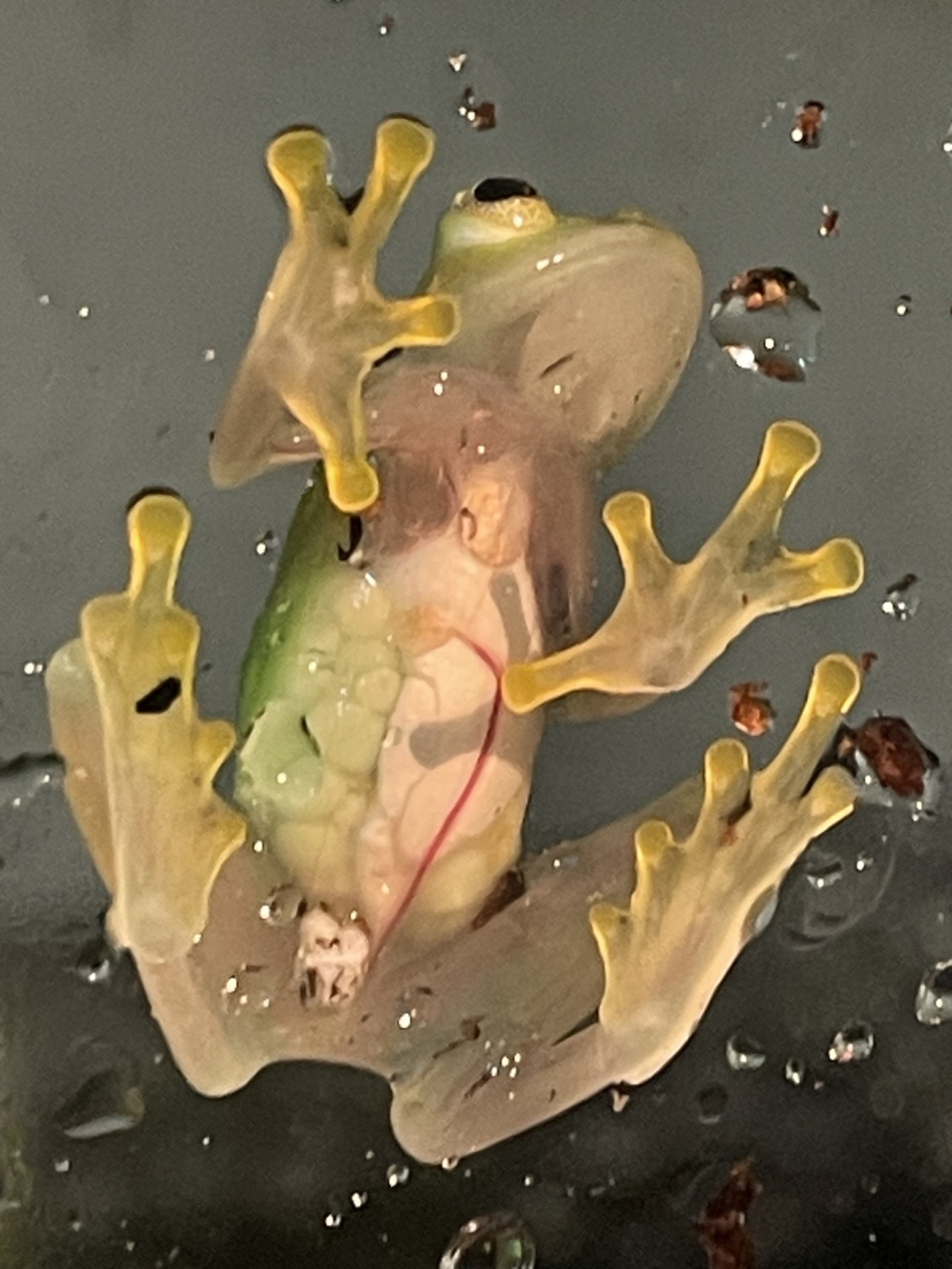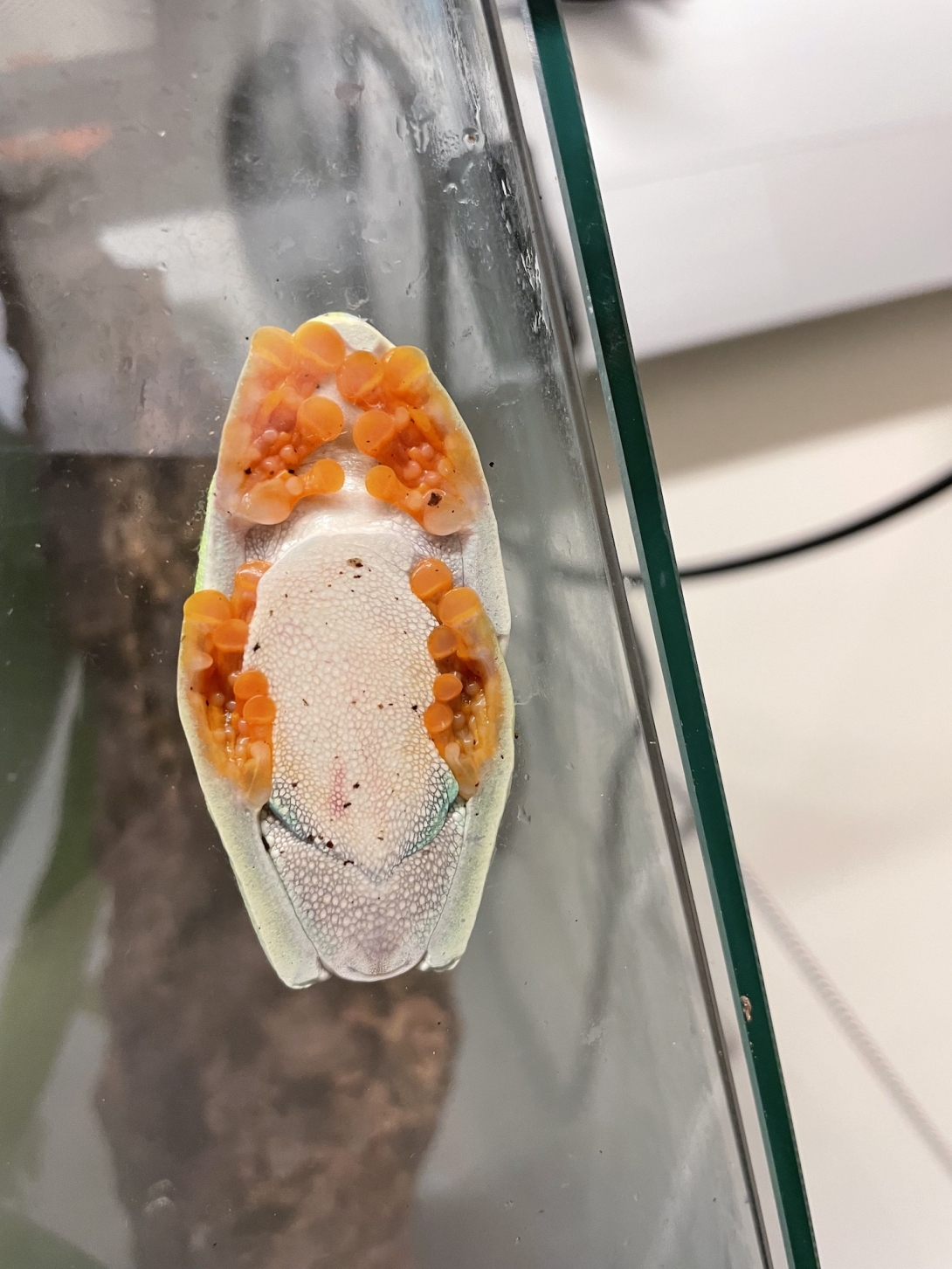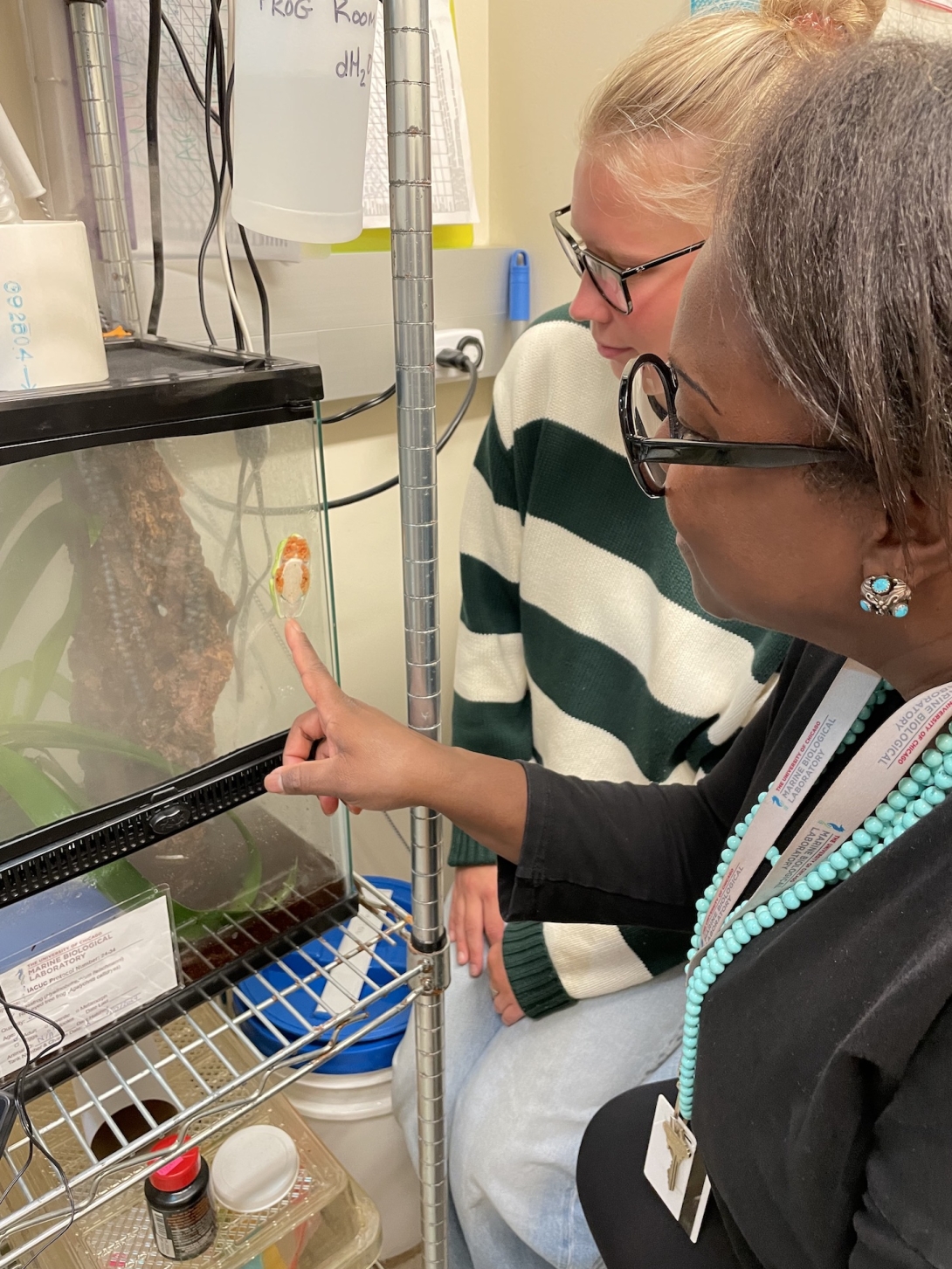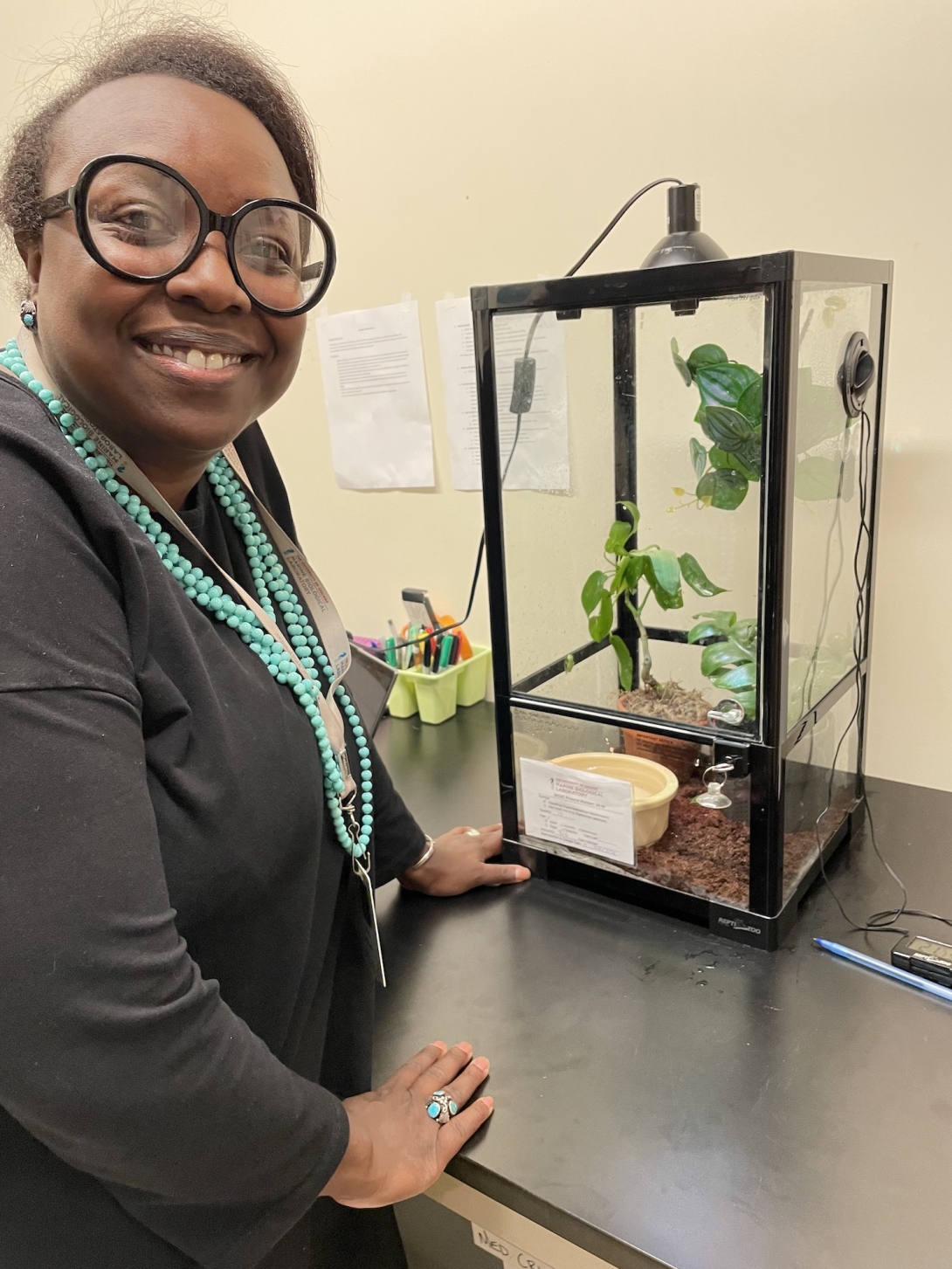Hop To It: Whitman Fellow Studies Frogs To Understand Childhood Stress

Childhood trauma can lead to developmental acceleration: a “live fast, die young” response. Sally Seraphin, 2024 E.E. Just and Whitman Fellow at the Marine Biological Laboratory (MBL), is exploring this phenomenon using two species of tropical frogs: Fleischmann's glass frogs (Hyalinobatrachium fleischmanni) and red-eyed tree frogs (Agalychnis callidryas).
Both species can hatch from their eggs earlier than normal when stressed, but do so with different triggers: the glass frogs in response to parental neglect (for example, if their father abandons his eggs instead of guarding them) and the red-eyes in response to predatory stress (for example, if a snake begins to eat the eggs). Comparing the two lets Seraphin look for the common genetic mechanisms that allow animals to “either build a body and a brain to support longevity, or build a body and a brain that will take advantage of limited opportunities when faced with acute stress, when the future isn’t promised,” she said.
At the MBL, Seraphin is embedded in the lab of collaborator Marko Horb of the National Xenopus Resource. So far, Seraphin has identified 170 genes that early-hatching red-eyed tree frogs either “ramp up” or “turn down” when compared to normal-hatching individuals. She hopes to learn the functions of these genes and whether or not early-hatching glass frogs are tweaking the same ones.




